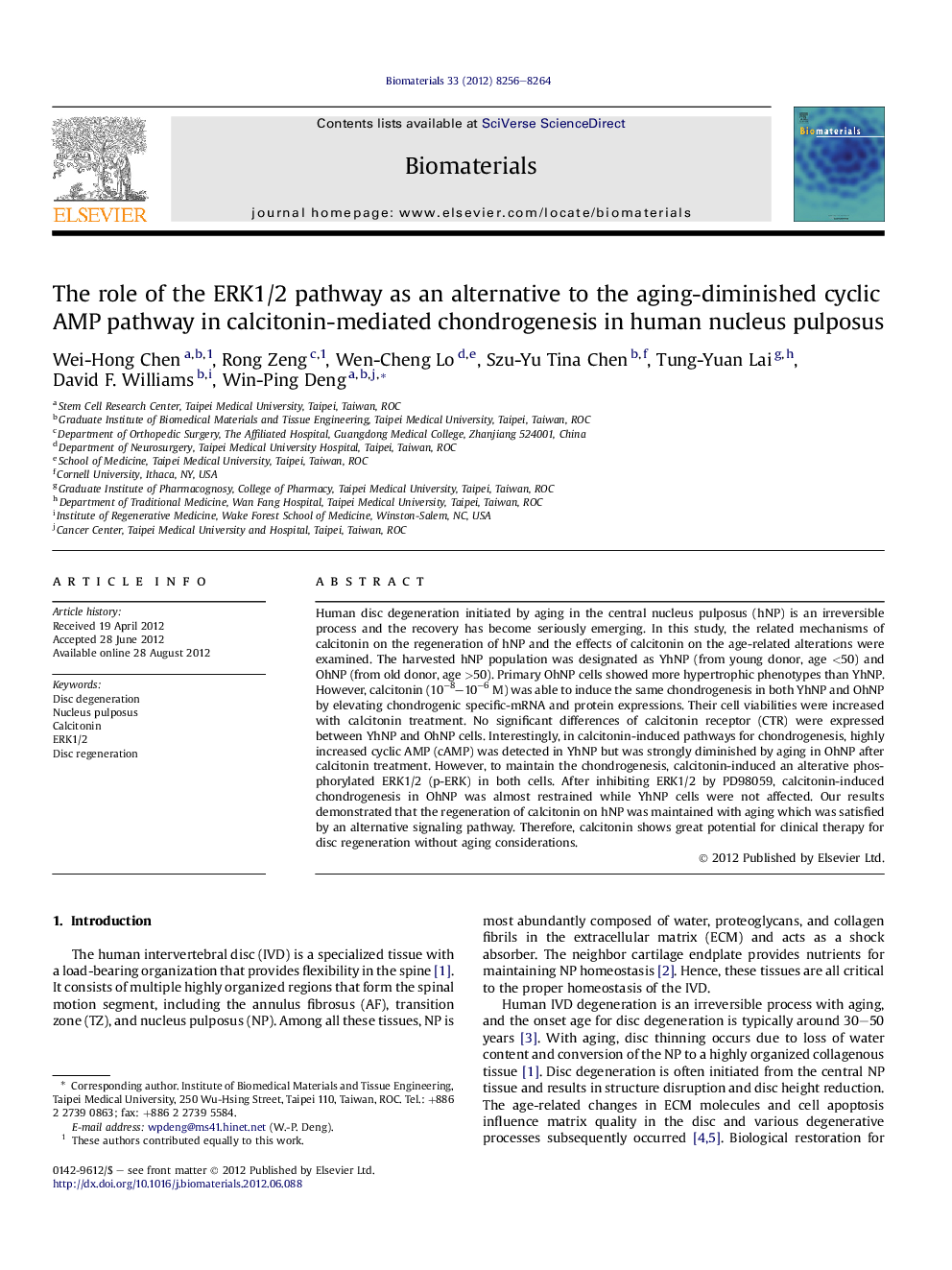| Article ID | Journal | Published Year | Pages | File Type |
|---|---|---|---|---|
| 6893 | Biomaterials | 2012 | 9 Pages |
Human disc degeneration initiated by aging in the central nucleus pulposus (hNP) is an irreversible process and the recovery has become seriously emerging. In this study, the related mechanisms of calcitonin on the regeneration of hNP and the effects of calcitonin on the age-related alterations were examined. The harvested hNP population was designated as YhNP (from young donor, age <50) and OhNP (from old donor, age >50). Primary OhNP cells showed more hypertrophic phenotypes than YhNP. However, calcitonin (10−8–10−6 M) was able to induce the same chondrogenesis in both YhNP and OhNP by elevating chondrogenic specific-mRNA and protein expressions. Their cell viabilities were increased with calcitonin treatment. No significant differences of calcitonin receptor (CTR) were expressed between YhNP and OhNP cells. Interestingly, in calcitonin-induced pathways for chondrogenesis, highly increased cyclic AMP (cAMP) was detected in YhNP but was strongly diminished by aging in OhNP after calcitonin treatment. However, to maintain the chondrogenesis, calcitonin-induced an alterative phosphorylated ERK1/2 (p-ERK) in both cells. After inhibiting ERK1/2 by PD98059, calcitonin-induced chondrogenesis in OhNP was almost restrained while YhNP cells were not affected. Our results demonstrated that the regeneration of calcitonin on hNP was maintained with aging which was satisfied by an alternative signaling pathway. Therefore, calcitonin shows great potential for clinical therapy for disc regeneration without aging considerations.
